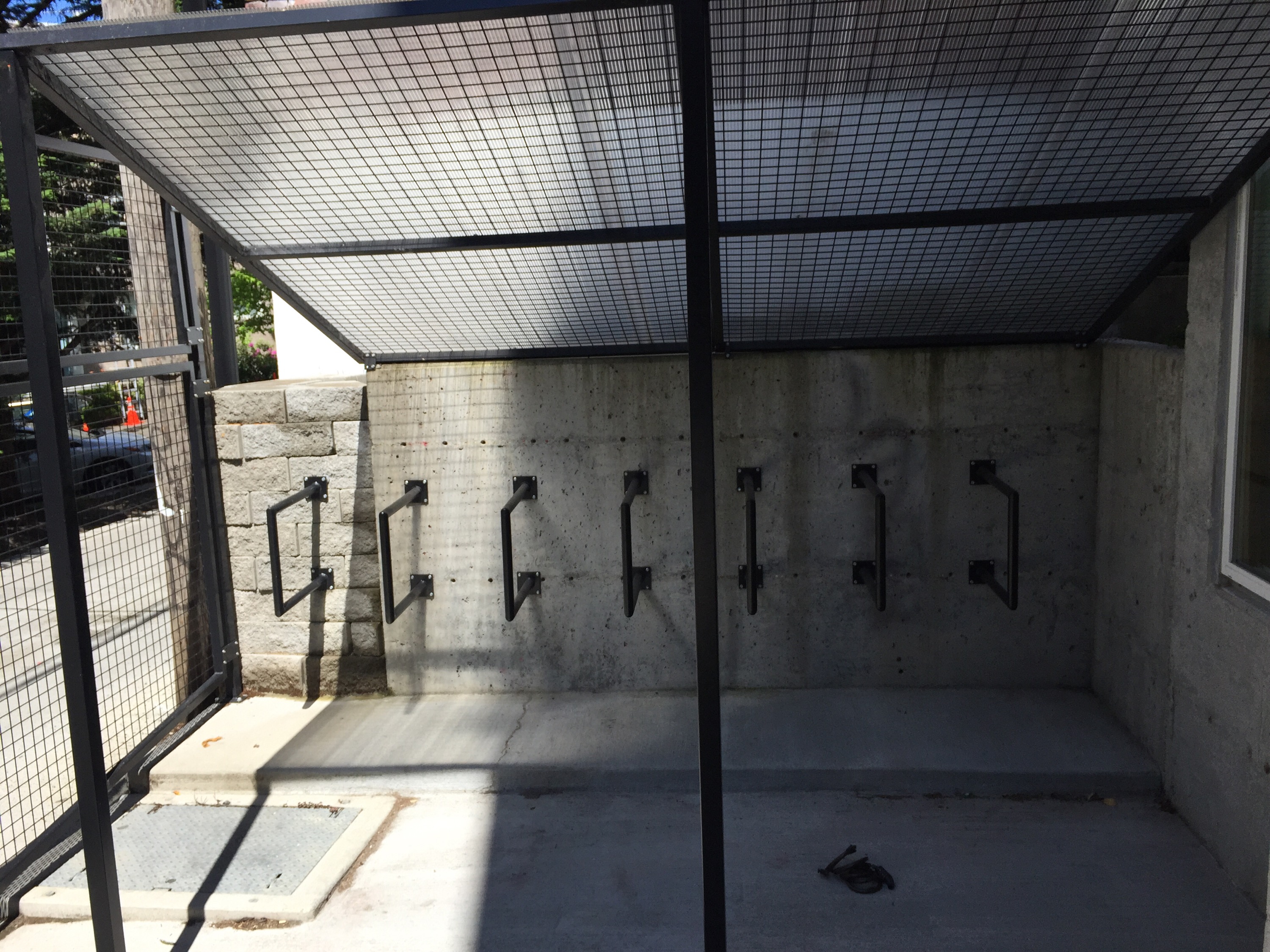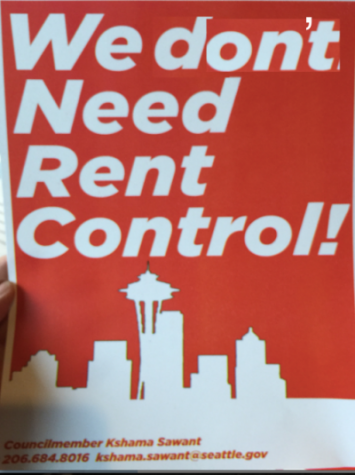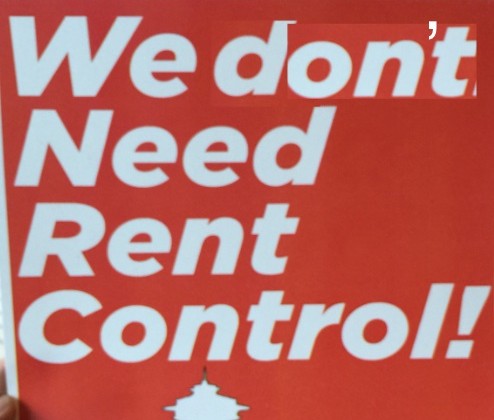Require Parking Spots or Bus Passes for New Housing?
Just the other day I posted an update on a report updating the City’s efforts to address the issues created by a December Hearing Examiner decision changing the way frequent transit service is calculated. The decision was unfortunate because it changed the simple straight forward way of calculating frequent transit service disallowing an average of the time between buses on routes near new development. This change means some projects having to add expensive parking or, worse, makes some projects completely infeasible. But what about allowing builders to buy bus passes for residents instead of building parking spots? Included in the report are a bunch of other ideas and recommendations including this one:
Require transit passes and other transportation options for new residential development.
POTENTIAL STRATEGIES
- Create a “residential transportation options program” that would apply to residential uses in new development in places with no minimum parking requirement (Urban Centers, Urban Villages, and light rail station area overlay districts).
- Require that new residential development participate in a residential‐based transit pass program as provided by King County Metro.
- Terms of participation will be fleshed out, with respect to how many options, chosen by which parties (land owners, homeowners associations), for how long, and subsidy levels, for example.
- Also include in this program enrollment in car share and bike share programs, and guaranteed ride home services.
Uh oh. Sounds like another well meaning but unfunded mandate. But the last sentence of the suggestion points out that “actual costs of this type of program will be a small fraction of the cost of building new parking.” Parking for sure is expensive and it always gets paid for with higher rents. It would seem like getting rid of parking requirements in exchange for a mandate to provide passes would, overall, be cheaper for everyone and potentially increase housing supply.
In an article touting the recommendation, the Atlantic’s City Lab points out just how much parking increases rents:
Charting the data on cost, we can see rents climb as the parking options become more complex, and thus expensive for the developer. A low-end rent in a building with no parking comes to $800 a month. Rent in the same unit in a building with the cheapest parking option, surface spots, comes to $1,200—a 50 percent jump. In a building with underground parking, the low-end rent hits $1300, a spike of 62.5 percent.
In the end, renters will pay for the bus pass (0r other transit alternatives) too, since the costs of bus passes will have to be considered an operating expense like utilities or maintenance. But using City Lab’s example, an Orca card with a regional pass costs $189 per month, a lot less than the parking spot. And not having to build parking is a savings that will make the overall project less expensive to build and, possibly, would free up square footage for people to live rather than mandated car storage.
Will the City go this route? Hard to say. What is true is that Councilmember O’Brien presided over the demise of microhousing, a process that ended up requiring its replacement, Small Efficiency Dwelling Units (SEDUs), to provide .75 covered bike parking spots for each unit. That means in a building like mine with 32 units, the requirement would have been 24 covered bike parking spots. My building has about 7 covered bike parking spots. How many of them get used? Here’s a picture of the 7 spots taken at the end of a typical week day.
The Council and planners at the Department of Planning and Development (DPD) have a knack for making things up, then imposing a requirement without really understanding how things actually work. Requiring lots of bike parking probably felt good, but it doesn’t make any sense. The same thing is true of requiring parking minimums or even transit passes. What does make sense is to find out if this kind of idea is something residents would pay for if it was offered. Nothing is free, but if rent included access to an array of car alternatives it’s likely than many people, especially people who don’t have cars and are already paying for transit would jump on the idea. The City can stoke that idea with a pilot, but requiring it and having the planners and Council manage it makes me nervous.
The Trouble With Progressives: They’re Sometimes Not Very Progressive
All the talk of rent control and linkage taxes on new housing culminated for me on Sunday with a Facebook post. The post was about an article on income inequality. It’s the kind of wonky post I find mixed in my feed with baby pictures and Instagrams of people’s lunches and vacations. The thread, including comments from Councilmember Mike O’Brien champion of the linkage tax on new housing, goes on and on. But a theme starts to form: how do we redistribute wealth. This issue is as old as humanity probably, the nagging sense that there is something systemic that contributes to or actually causes maldistribution of wealth. When it comes to housing, progressives tend to argue, sometimes, against even having a market in housing. After all, housing is a universal need and nobody should profit from people who just need a roof over their heads. Most progressives are a bit more subtle, feeling that some redistributive scheme will resolve housing scarcity.
Facebook friend Ben Schiendelman posted this:
Reading Orfield’s “American Metropolitics”, I’m into the section about fiscal inequality and sprawl. Seattle MSA’s Gini coefficient went up from .11 in 1993 to .21 in 1998 – the largest jump in the US, by far, a 99% increase. In the top 25 metros, the next highest change was 38%, in Phoenix, and then 20%, in Philadelphia. The only major factor I’m aware of in that time period unique to the Seattle MSA was the 1989 CAP initiative, which instituted design review and made sweeping restrictions on height, halting our tall building spree and causing our growth boom to displace older buildings throughout the city instead of the earlier focus on downtown. Voter turnout for CAP? 23%, with 2:1 approval. About 15% of Seattle voters may have doubled our inequality in one May special election.
The Citizen’s Alternative Plan or CAP Initiative passed in 1989 and was a reaction against “all the big buildings” in downtown. It enacted height and density limits presumably for a mix of reasons including trying to reign in “runaway growth” and bad design. The point of the post is intriguing: Did angry Seattle neighbors actually make inequality worse when CAP passed? It’s hard to prove.
The HistoryLink article on the topic has this paragraph that might sound familiar:
University of Washington public affairs professor Hubert Locke said, “There is a strong feeling that the growth people overplayed their hand.” On the other hand, economist Glenn Pascall defended leftwing CAP opponents such as Walt Crowley as traditional liberals seeking social benefits and expanded employment through guided private development. Despite near-universal editorial opposition in the daily press, the CAP initiative won by a substantial margin. However, an attempt to harness this victory to power a “Vision Seattle” slate of City Council candidates failed in the fall 1989 elections. Jim Street’s bid for mayor also died in the primary and CAP opponent Norm Rice was ultimately elected.
Linkage taxes, like the CAP Initiative, are a cry of pain from the people who are already here in our city. People who see themselves as generous, though, want to find a way to both slow down growth, solve a social problem, and punish (at least a little bit) people who made a lot of money building housing. We’ve seen this again and again. That last point, wanting to punish developers, would be denied by supporters of the linkage tax or the CAP Initiative. But in the comment threads and polls, it’s pretty clear that people feel like someone is laughing all the way to the bank — and it makes them mad.
Here’s part of the comment I posted in the thread:
I’ve been seeing this thread unfold and haven’t had much time to give it. For what it’s worth, in my view, it’s drifting in the ways we drift around here. “Hey you! You have too much money. Give some to that guy. Man, I sure feel better about myself now!”
Let’s stop. Even Deng Xiaoping said, “I have two choices, I can distribute poverty or I can distribute wealth.”
If we want to help people who are poor we should make more housing and more jobs. I’m less worried about the relative wealth of the “have’s” than the destitution of those who “have not.” It is stilted thinking to push to take from the one and give to the other.
Progressives usually get in their own way, devising schemes to somehow do three things people want at once: slow down growth and change, solve social problems, and ensure that builders “pay their fair share.” Well they already do. But passing measures to stick it to the Man are politically popular and ideologically consistent with the Us versus Them narrative used by some progressives and the politicians they elect. “Put me in office,” they say, “and I’ll protect you from growth and change, help the poor, and punish people profiting from growth.”
And if it isn’t already obvious, trying to do all three of these things won’t help housing prices. They just make things worse for poor people. Hopefully our discussion leads us toward solutions that include more housing and efficient subsidies to solve the problem, not inefficient redistributive schemes that end up punishing everyone with higher prices, especially new people, renters, and the poor.
More Discussion About Parking at City Hall
The City Council’s Planning Land Use and Sustainability (PLUS) Committee heard back from Department of Planning and Development (DPD) staff yesterday reporting on a review of parking policy. The report was added to microhousing legislation last year by Councilmember Rasmussen who, by all accounts, seems to be on something of a campaign to add more parking back to new housing development. However, based on body language and their responses other Councilmembers don’t seem as motivated. Fortunately, Rasmussen leaves the Council at the end of this year.
One important topic did come up, parking requirements for projects in areas served by frequent transit. We’ve written a letter urging the Council to clarify with legislation two issues, using averages to calculate transit headways and to allow use of the map that designated which areas the City already agrees have frequent transit service. We got one of those, the use of the map, in the recommendations of the report but not using an average. The use of averages was discussed supportively by staff and it seems that there is an understanding that the Hearing Examiner’s decision will need to be addressed with legislation.
This change to requiring builders to recalculate headways has lead to some bad outcomes, specifically projects becoming infeasible because of onerous parking requirements. A new Directors Rule won’t help these projects. So legislation is going to be needed and sooner rather than later.
Here’s the section of the report on the topic:
Clarify use of frequent transit service as the basis for parking regulations
POTENTIAL STRATEGIES
- Clarify the frequent transit service definition to accommodate slight variations in transit service, to use a functionally equivalent service standard (such as four bus trips per hour) to address minor gaps of one to three minutes greater than the currently defined 15 minutes.
- Include a map in the Land Use Code to define the area with frequent transit service, rather than require detailed calculations for each project.
- Explore other Code changes to recognize how transit service from multiple routes, heading in the same general direction, may be recognized as providing actual frequent transit service opportunities.
The proposed changes to frequent transit service would make the Code consistent with definitions used by King County Metro and SDOT for transportation planning purposes.
We will be watching this as it unfolds. If legislation is proposed it would likely be before the committee in the last half of this year.
We Don’t Need Rent Control!
I have a guest editorial at Publicola about rent control. The editorial goes through what I wrote about earlier this week about the fact that we already have lots of rent restricted units in town and that we can always add more. Publicola published my modification of Councilmemer Sawants Soviet style posters calling for rent control.
If you have a minute drop by Publicola–Publicola.com–and leave a comment. Currently it is not clear if the Council will consider Councilmember Sawant and Licata’s proposed resolution on rent control.
44 Percent of Rental Units in Seattle Between 0-80 AMI Have Rent Restrictions
I have already pointed out before that rent control (really a price control) won’t work. Price controls never work to do the thing they are supposed to do: lower prices. And there is almost unanimity among economists who haven’t just speculated theoretically on the topic but studied it that rent control doesn’t work. But what might surprise many people in the discussion about rent control is that we already have restrictions on rental units in Seattle. Of the approximately 82,600 rental units identified by the Puget Sound Regional Council (PSRC) affordable to people earning 60 to 80 percent of Area Median Income (AMI), more than 36,000 or about 44 percent, have limits on rents. Those limits include how much rents can rise, income of tenants, and the resale of the building to other builders, and they last anywhere from 12 to 40 years.
How is this possible? There are many programs already working to keep rents under control for households that are earning less money. I’ve already written about the thousands of units are created efficiently and and lower costs by the Multifamily Tax Exemption (MFTE) Program and the City’s Housing Levy.
Multifamily Tax Exemption Program (MFTE)
The MFTE program grants a property tax exemption to housing projects that set aside at least 20 percent of its units for housing for people who earn between roughly 60 and 80 percent of AMI.
There are currently 4,369 units in the MFTE program. The total annual cost of the program in deferred property tax is $3.6 million. That means that, on average, an MFTE unit costs the city under $900 per year. [3]
Costs to Produce 1400 Units Using MFTE
- $860 X 1400 = $1,204,000
- Cost: $10 for a median valued single-family home per year[4]
Seattle’s Housing Levy
The Seattle Housing Levy is a property tax on all property in the City and generates funding for new housing, operations, and rehabilitation of existing affordable housing. The Levy typically funds housing for people who earn 0 to 60 percent of area median income. In 2013, the Levy produced 314 new housing units costing $13.4 million in Levy funds. Those funds were more than matched by other sources, including the largest source of capital, Low Income Housing Tax Credit equity; this enabled the City’s contribution to be $42,675 per unit.[5]
Costs to Produce 1400 Units Using Levy Funds
- Levy $42,675 x 1400 = $59,475,000
- Cost: $65 for a median valued single-family home per year[6]
So not only is rent control a famously bad idea, we’ve actually accomplished what it claims to be able to deliver: units priced affordably for poor families. Taken together the MFTE, Levy, the Seattle Housing Authority’s voucher program, and other programs like the Housing Trust Fund and Low Income Housing Tax Credit program are providing many, many rent restricted units at a low cost to tax payers. These programs can and should be expanded, and if we figure out how to build on City owned land using the City’s bonding authority we’ll add yet another useful tool to the community’s housing tool belt.
But rent control? We don’t need it. Linkage? Not necessary. Both are illegal, and both are inflationary. Let’s focus on things that are already making life easier for families trying to make ends meet in our city, not controversial, time wasting interventions that will actually make things worse for them and everyone else.







